Angiopteris evecta (Giant Fern, Mule's-foot Fern, Dermarm (Palau), Madagascar Tree Fern )
Botanical Information
| Family | Marattiaceae |
| Genus | Angiopteris |
| Species | evecta |
| Synonyms | Polypodium evectum (George Forster in 1786), and Angiopteris elongata |
| Category | Perennials, Tropicals, Ferns |
| References | Global Invasive Species Database (2019) Species profile: Angiopteris evecta. Downloaded from http://www.iucngisd.org/gisd/species.php?sc=1550 on 12-05-2019. |
| Origin | Woodland fern from Japan to Australia and Madagascar. |
| Ethnobotanical Uses Disclaimer | Angiopteris evecta is cultivated worldwide as an ornamental fern. Also, its starchy rhizomes are sometimes eaten or used to perfume coconut oil. |
Details
| USDA Hardiness Ref. | |
| Canadian Hardiness Zone | Requires cold seasons protection under glass. |
| Canada Hardiness Ref. | |
| RHS Hardiness Ref. | |
| Temperature (°C) | 19 - 27 |
| Temperature (°F) | 66 - 80 |
| Height | 2 - 4 m (including leaves) |
| Spread | 2 - 3 m |
| Growth | Fast |
Description and Growing Information
| General Description | Angiopteris evecta is a large fern, with a "stem" (rhizome) up to 1 m tall, and leaves up to 3 m+ long and 2 m wide. |
| ID Characteristic | Angiopteris evecta establishes dense stands that dramatically alter ecosystems by displacing and outshading native species. It has established abundant, invasive populations in Hawaii, Costa Rica, and Jamaica that threaten native plants as well as general biodiversity and may pose a serious threat to native plant diversity in the tropics. Angiopsteris evecta is thought especially problematic on islands that house many endemics and that have patchy, relatively disturbed forests" (Christenhusz & Toivonen, 2008; Christenhusz, pers. comm., 2010). |
| Propagation | Difficult to propagate by spores, the stipules from the frond base can be removed and will form new plants in a year. |
| Cultivation | Best grown in partial shade with moist, well-drained soil. |
| Notable Specimens | Bok Tower Gardens, Lake Wales, Florida, United States of America. |
| Habitat | Angiopteris evecta inhabits tropical environments. This fern appears able to naturalize freely in wet valleys. |
| Bark/Stem Description | A short, thick stem. |
| Leaf Description | Huge segmented fronds (bipinnate) up to about 3 metres long. |
| Flower Description | A. evecta takes many years before it is capable of producing spores. Adult leaves are covered in thousands of sporangia, each of which produces 1,440 spores. |
| Fruit Description | The oval clusters of spore bearing cases (sporangia) are in two rows on the under surfaces of leaflets. |
Photographs
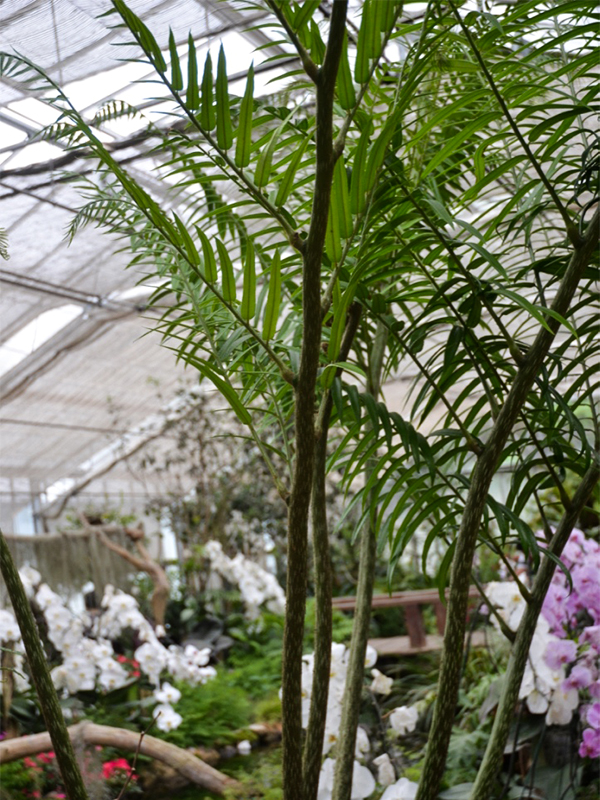
Angiopteris evecta, form.
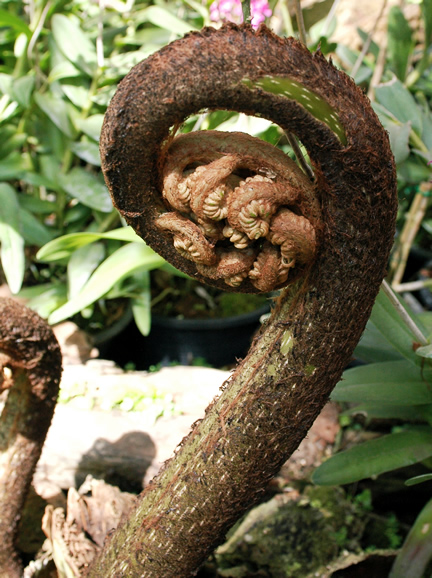
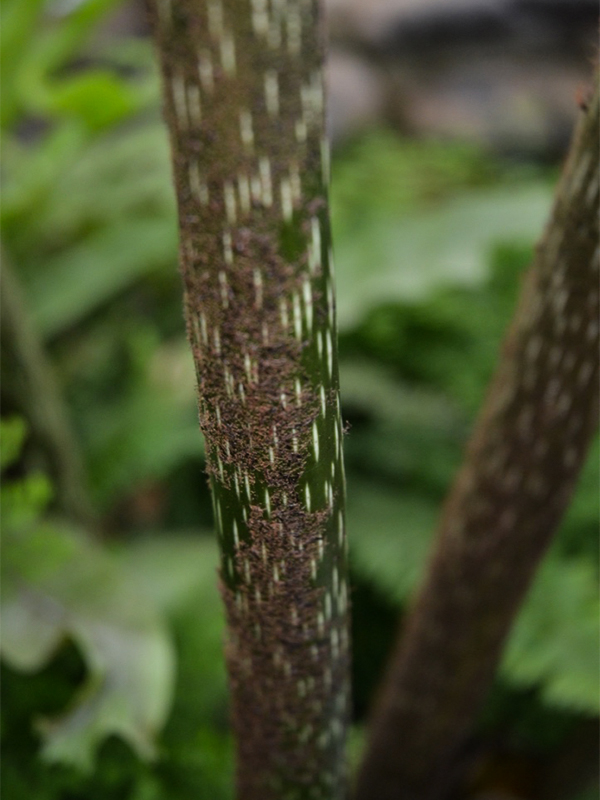
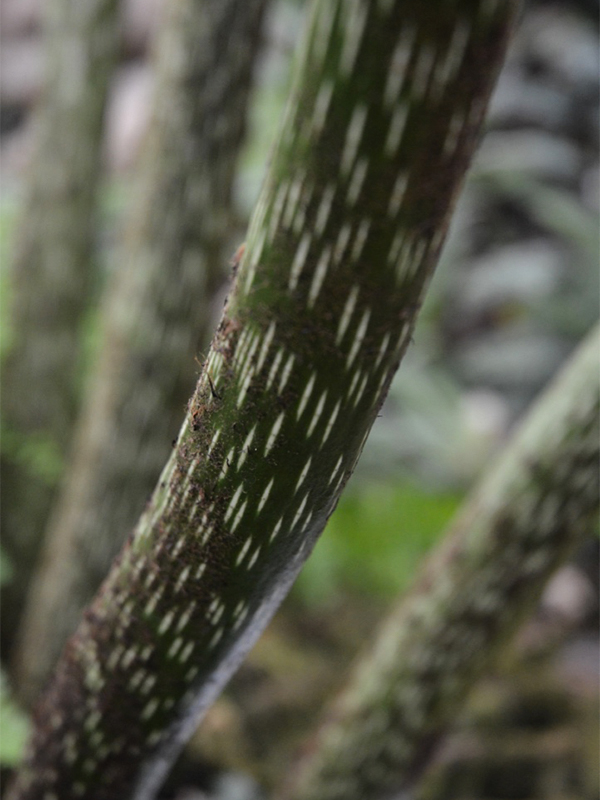
Angiopteris evecta, stem.
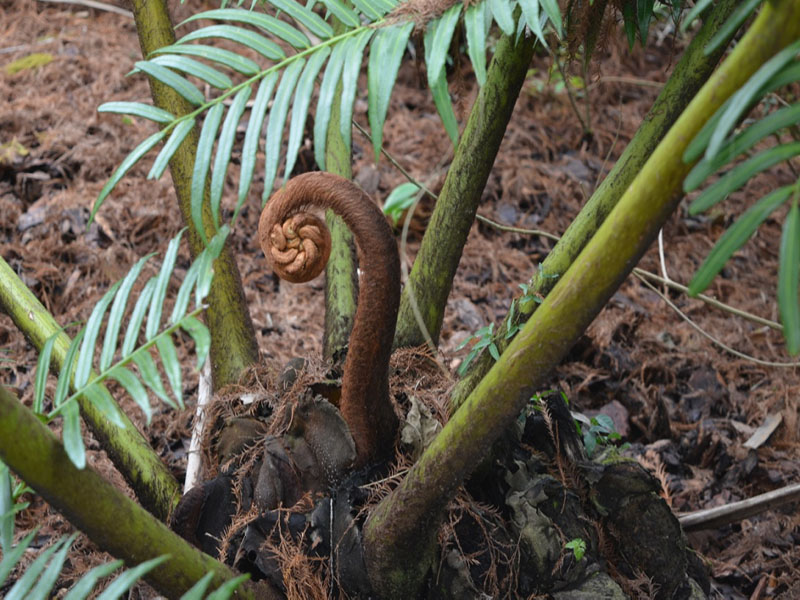
Angiopteris evecta, form, Bok Tower Gardens, Lake Wales, Florida, United States of America.
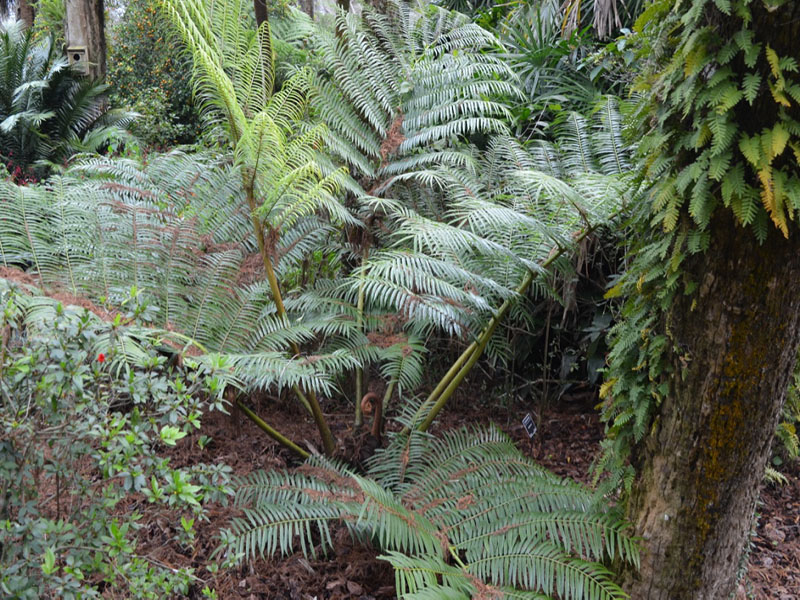
Angiopteris evecta, form, Bok Tower Gardens, Lake Wales, Florida, United States of America.
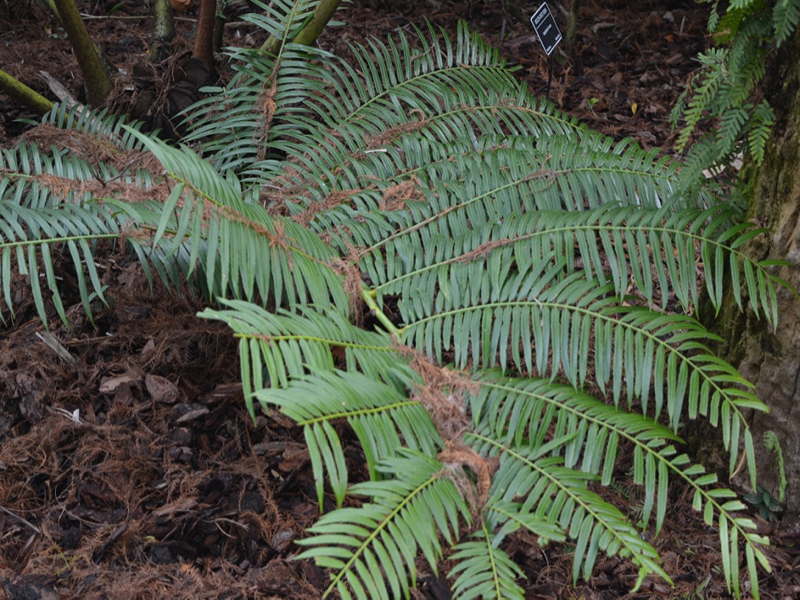
Angiopteris evecta, leaf, Bok Tower Gardens, Lake Wales, Florida, United States of America.